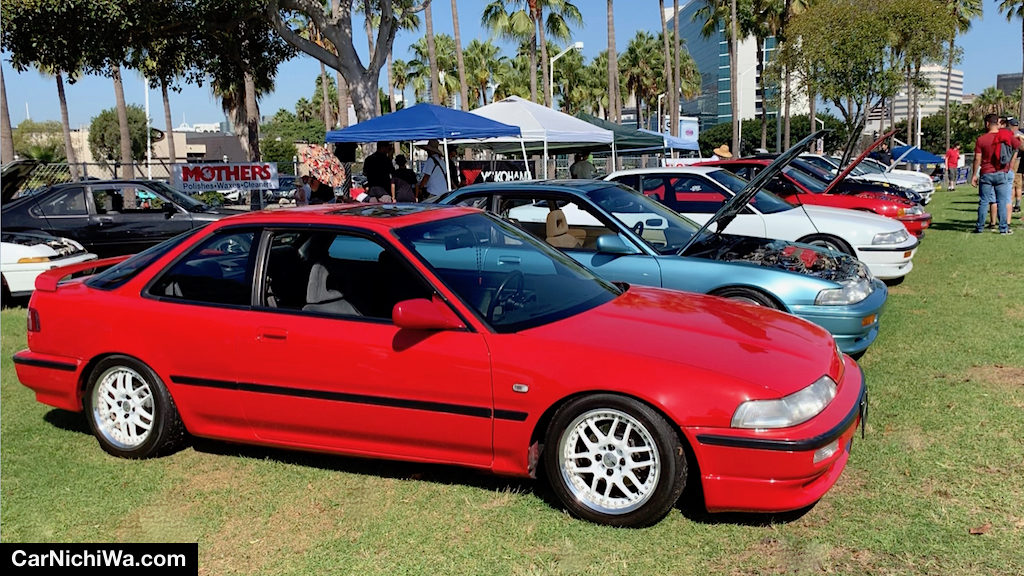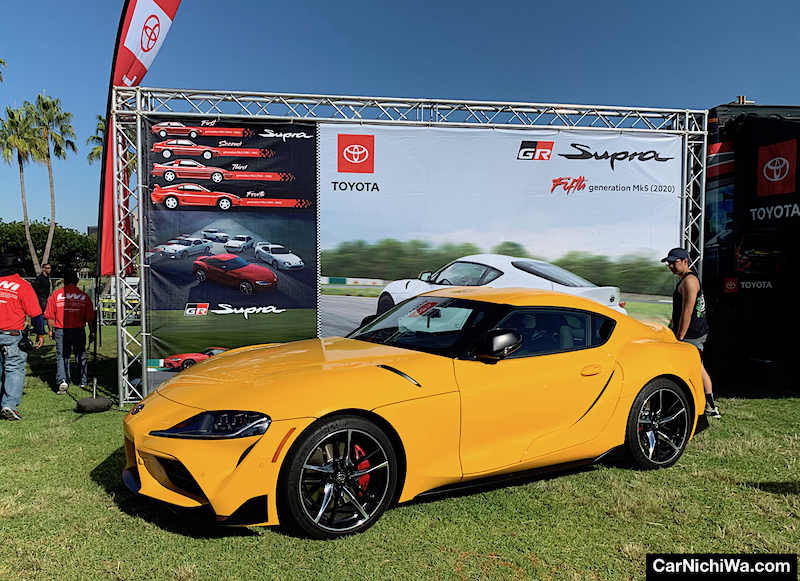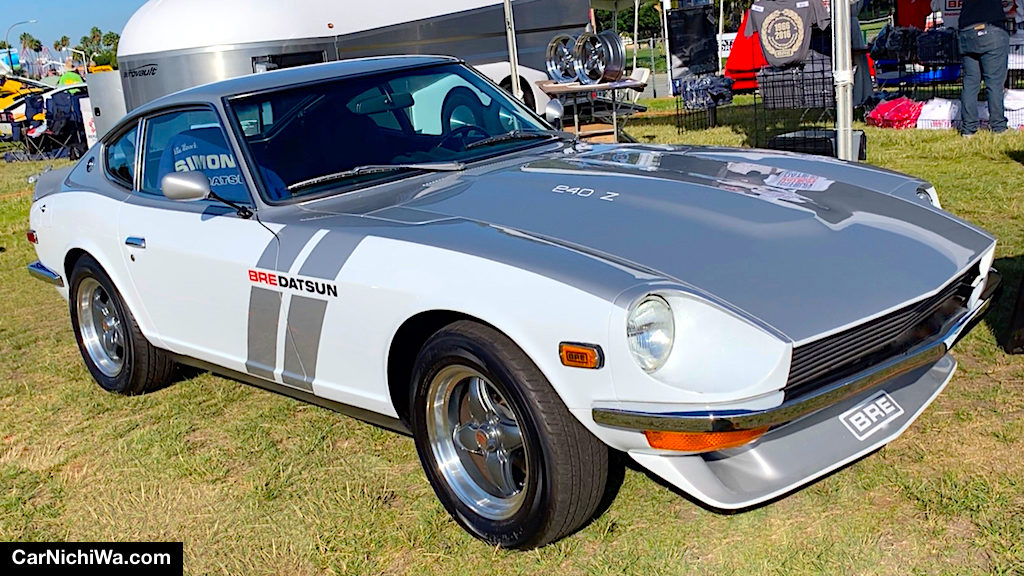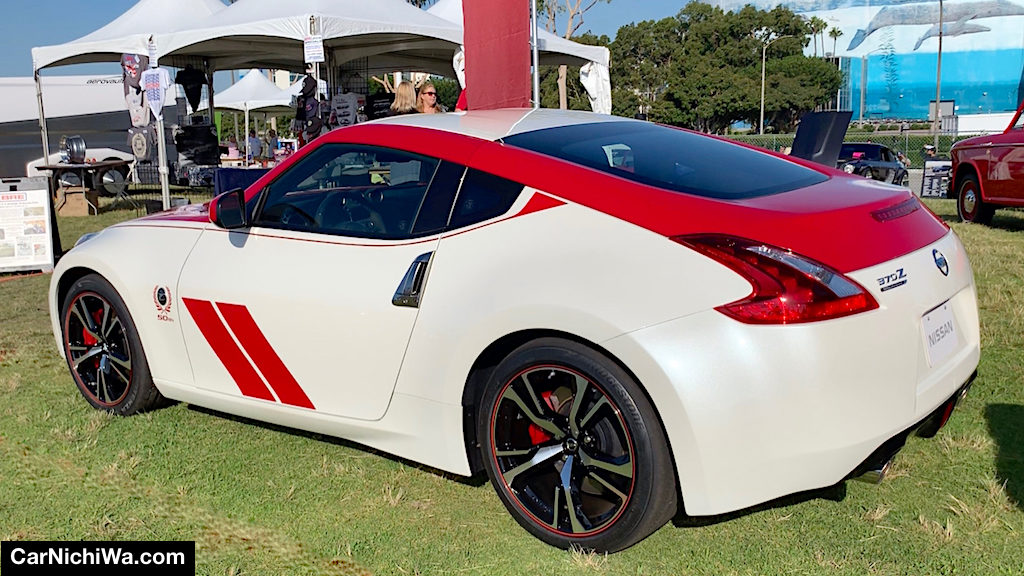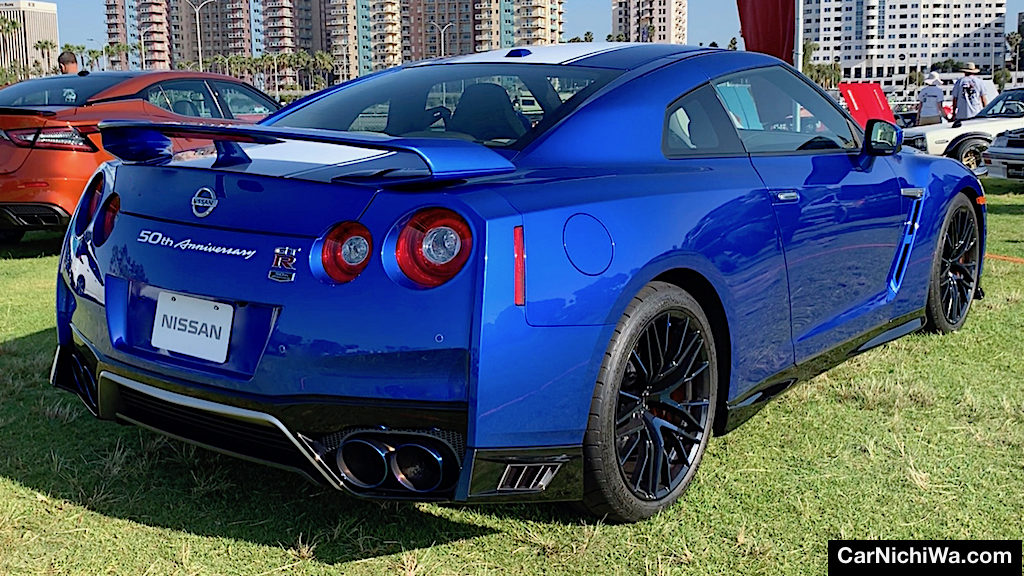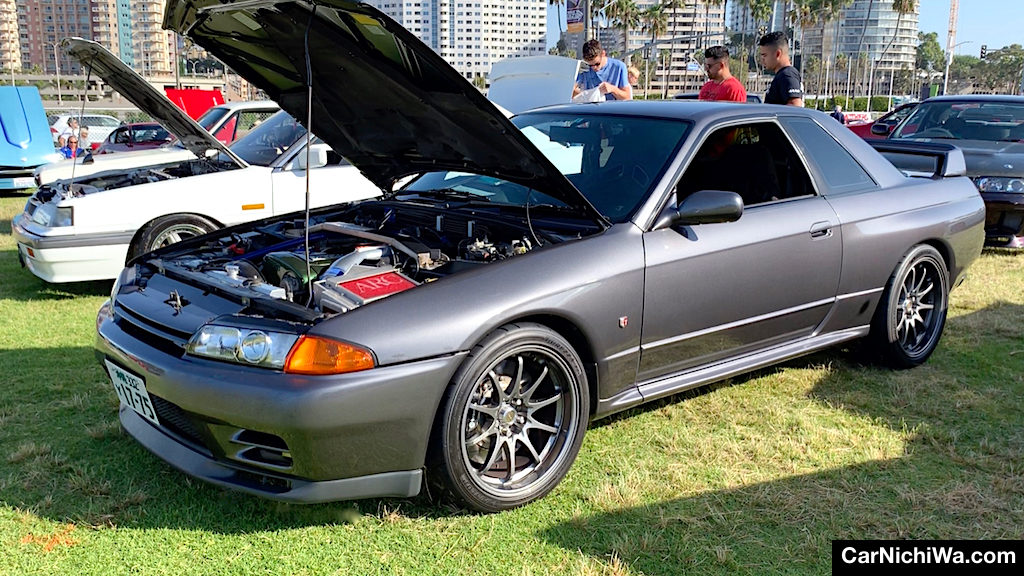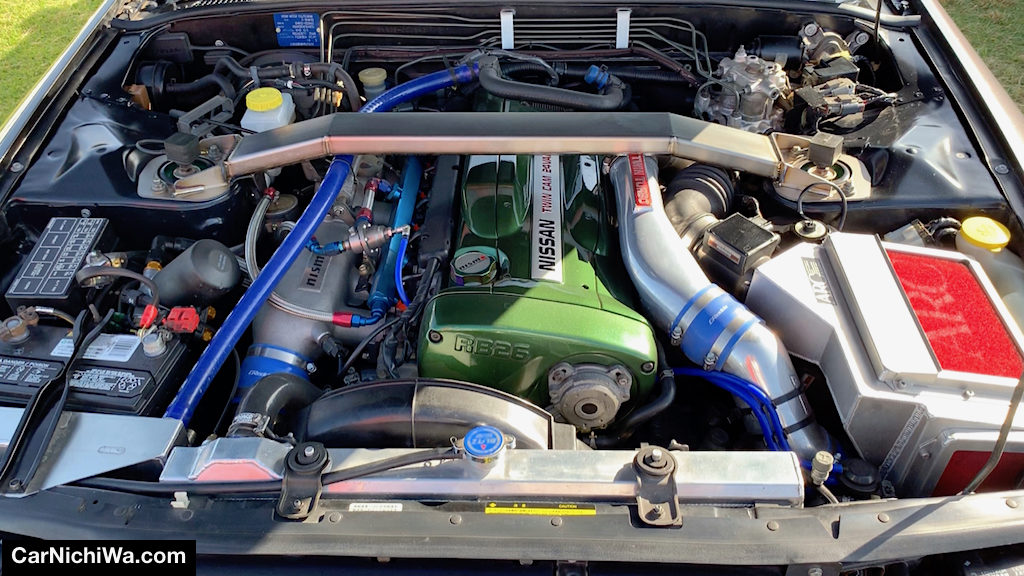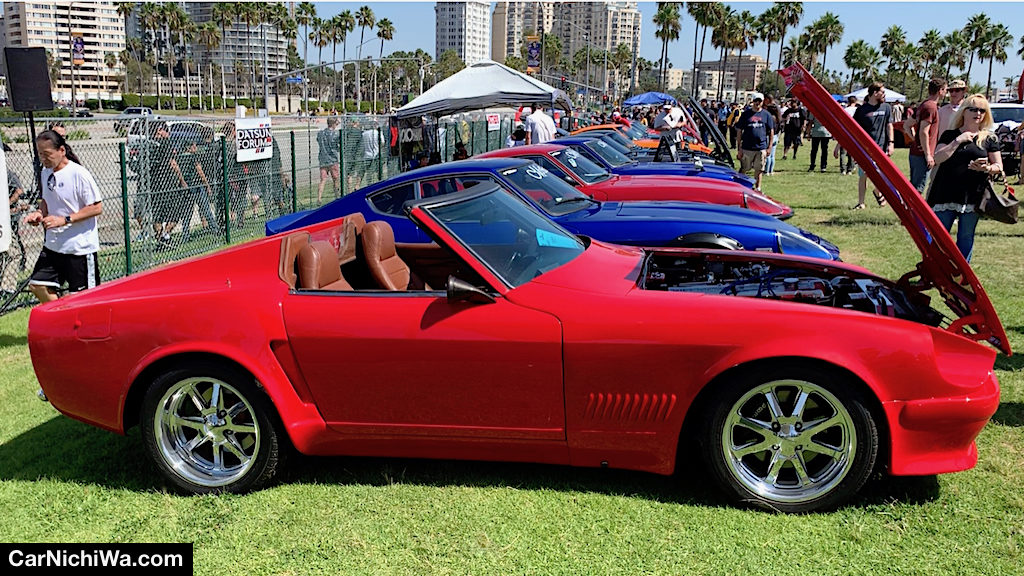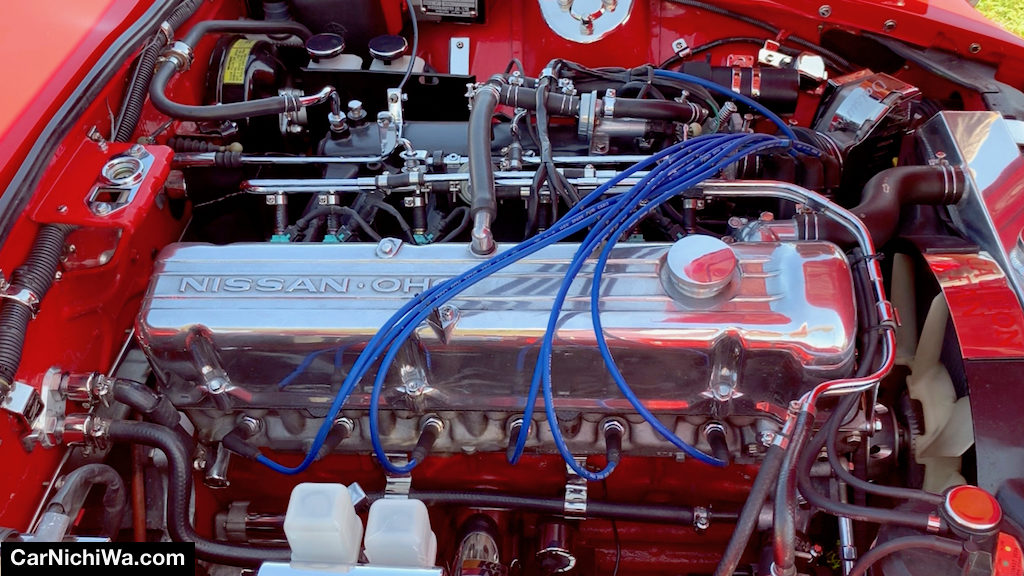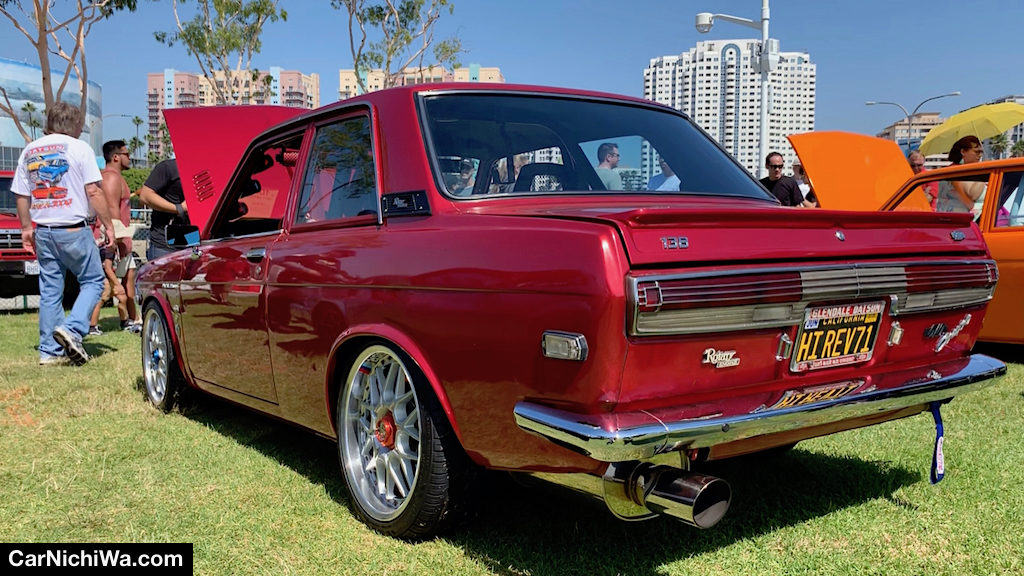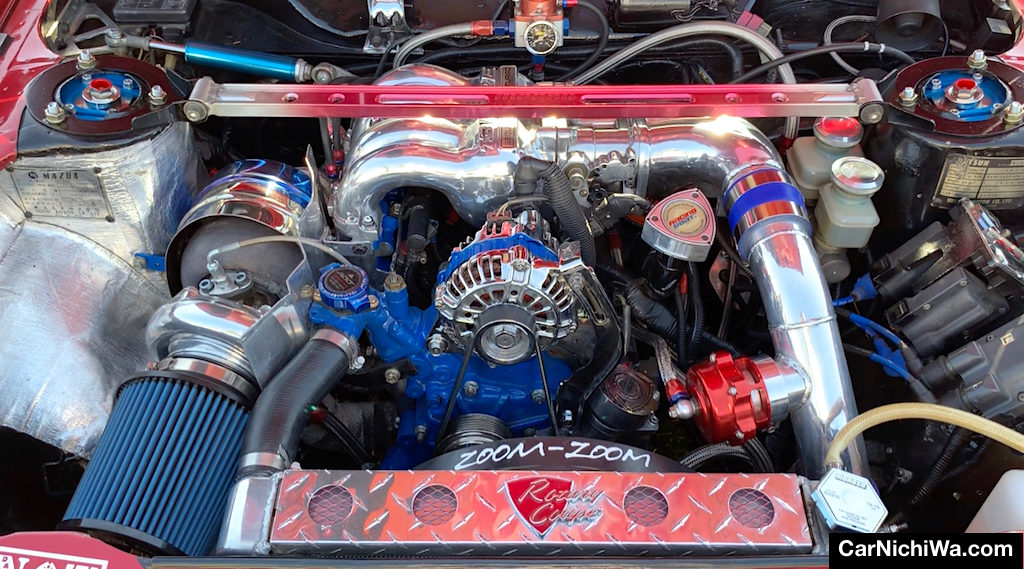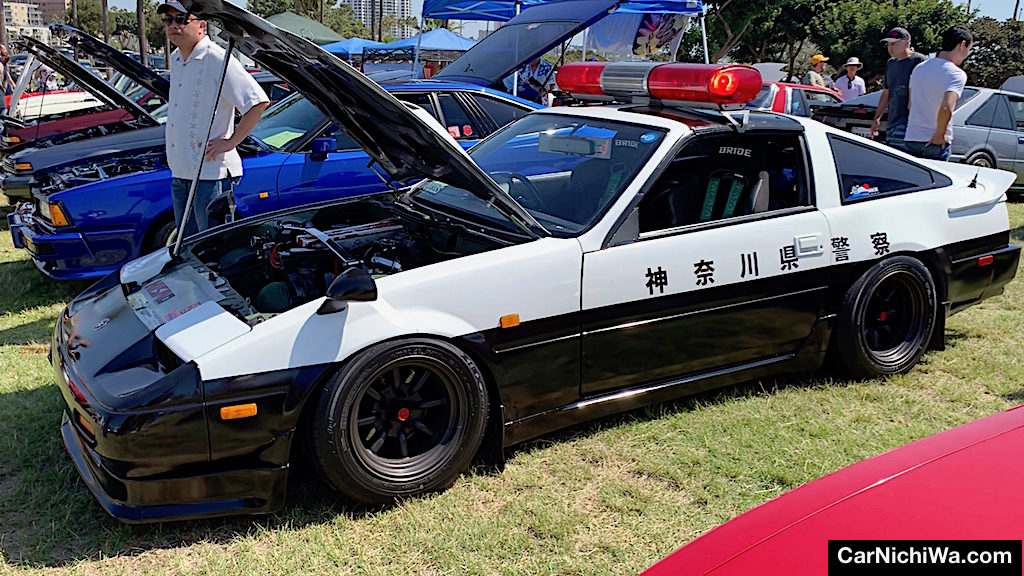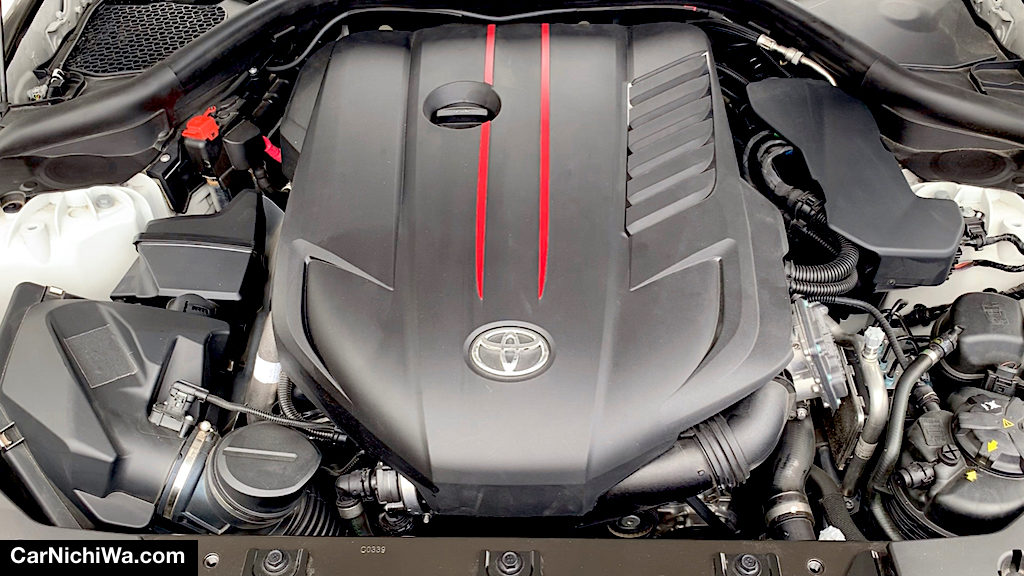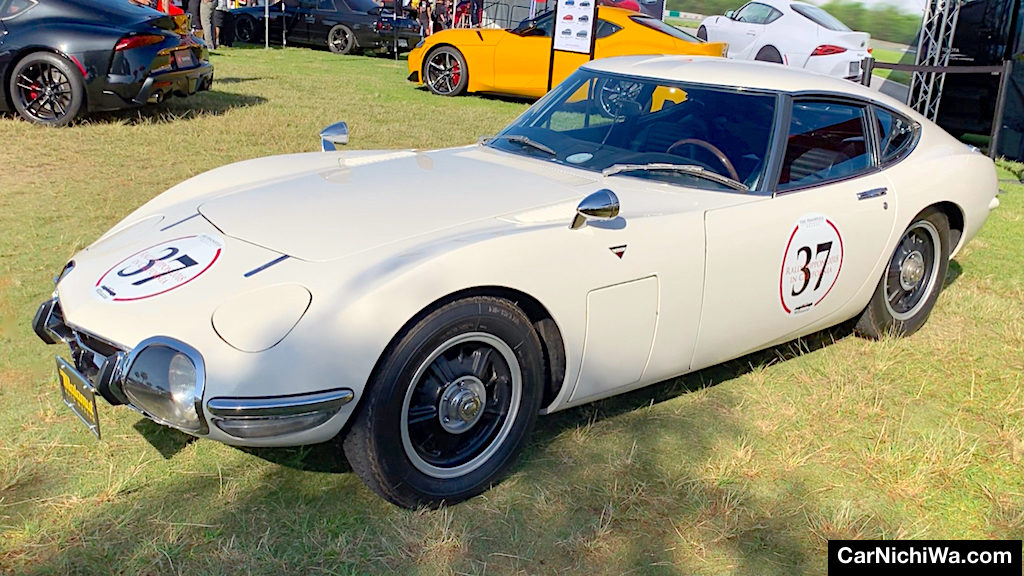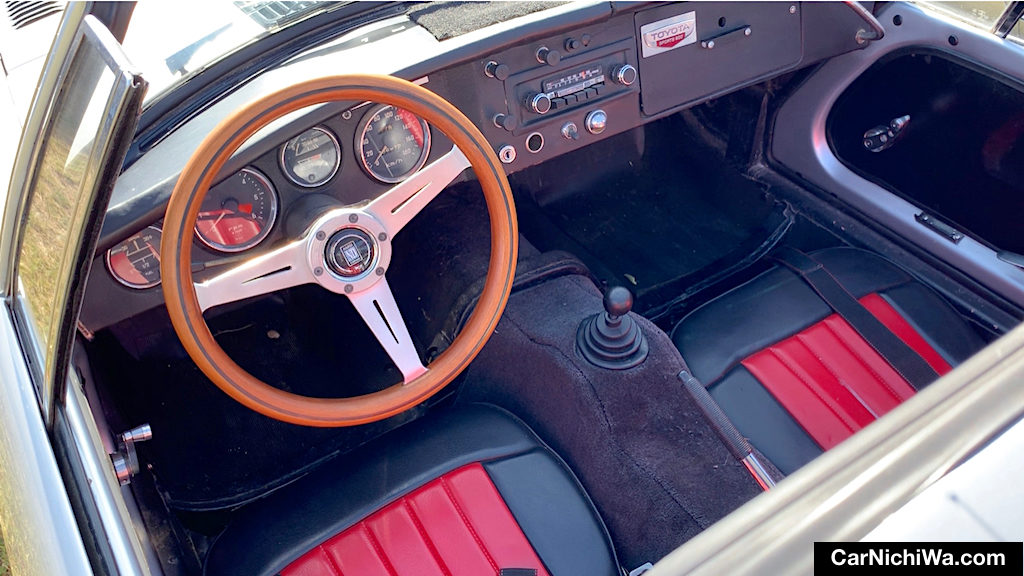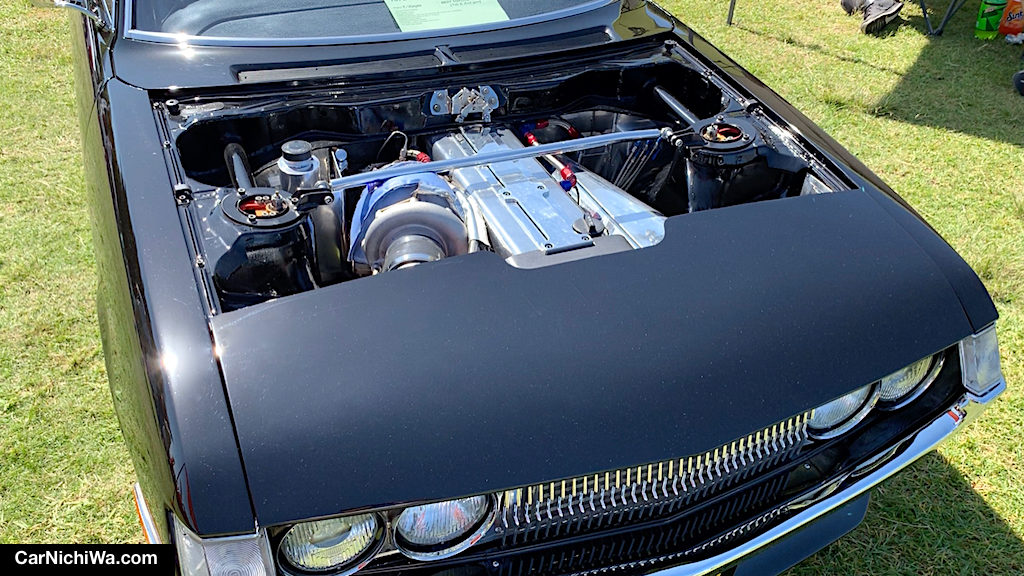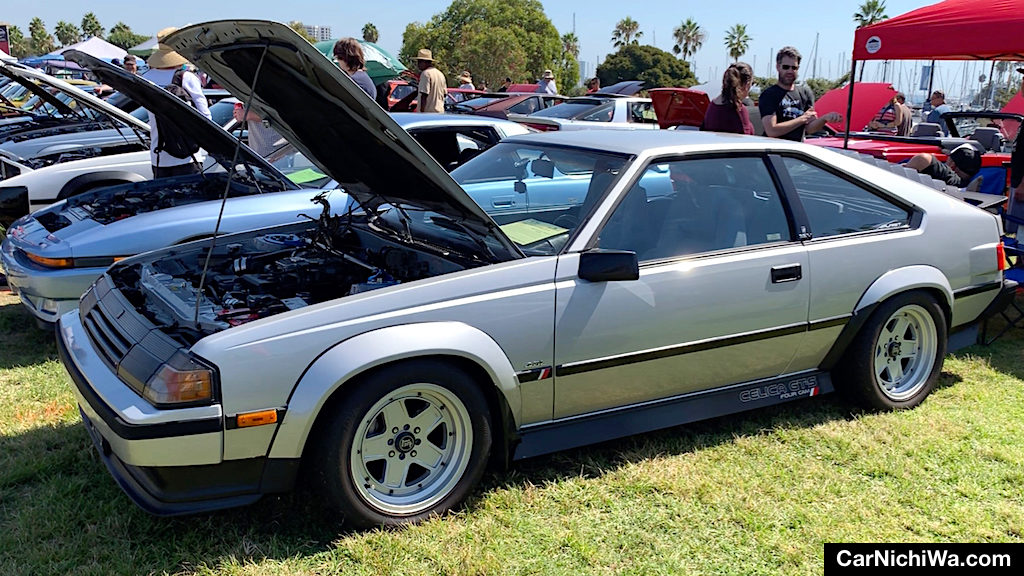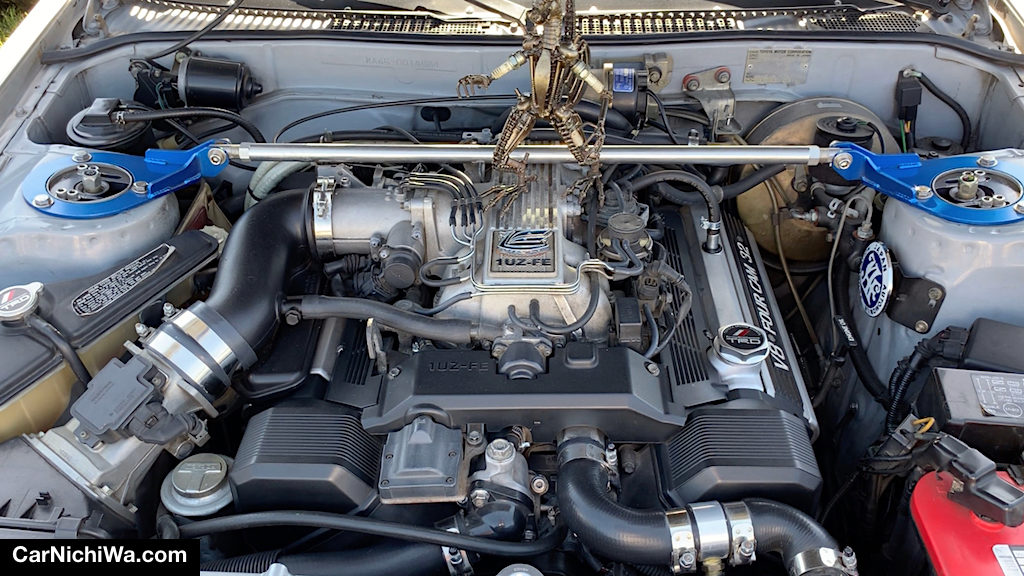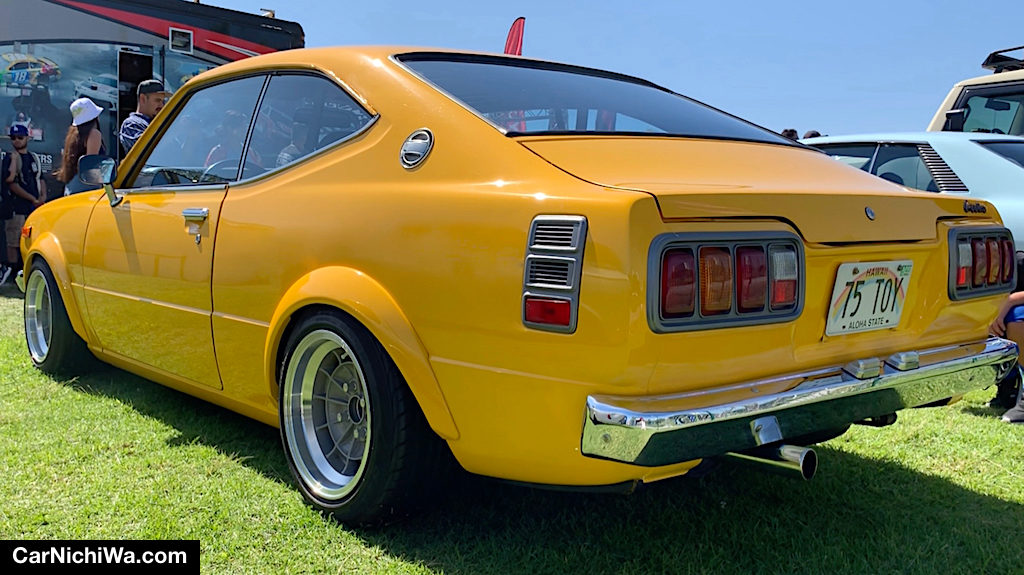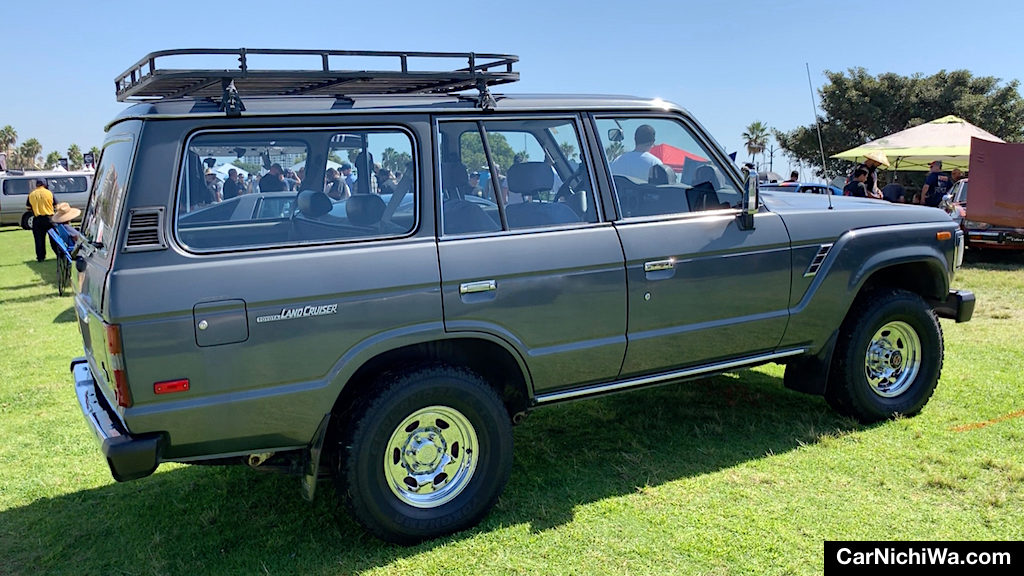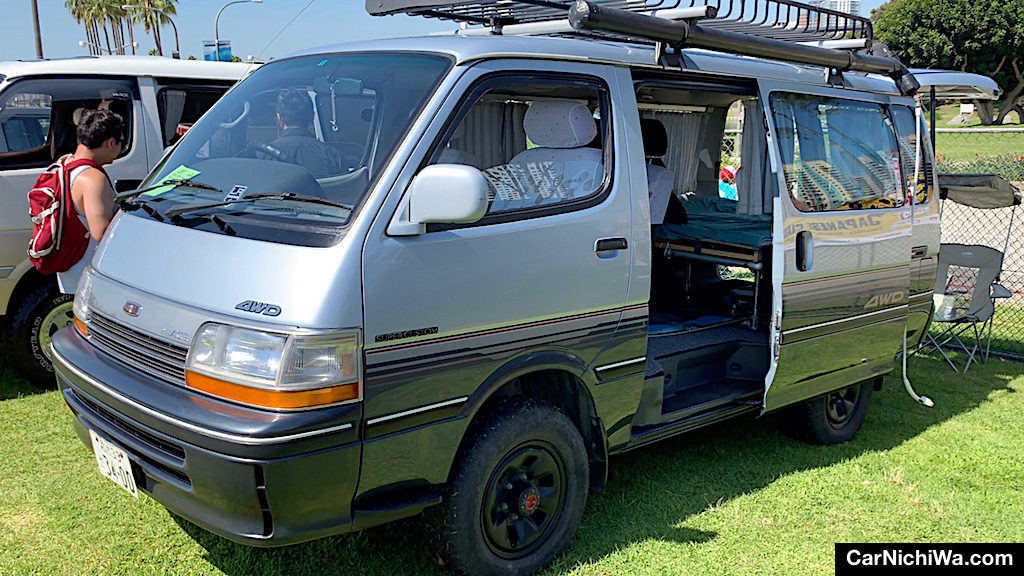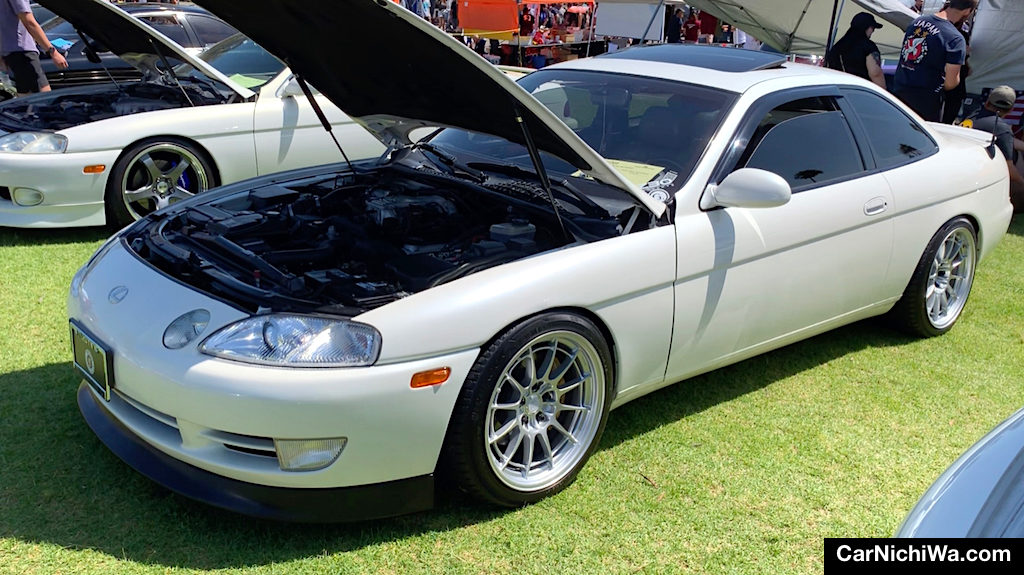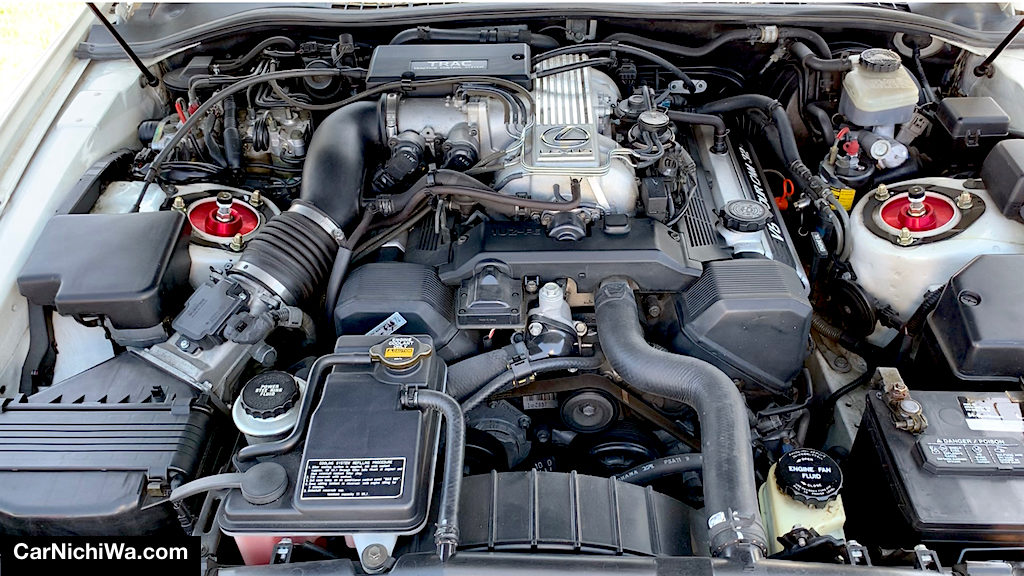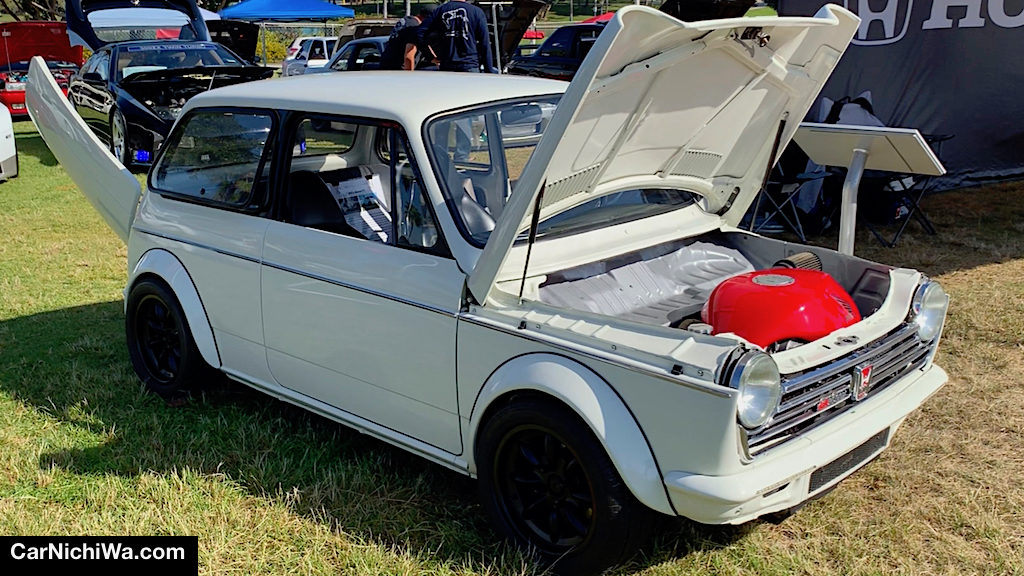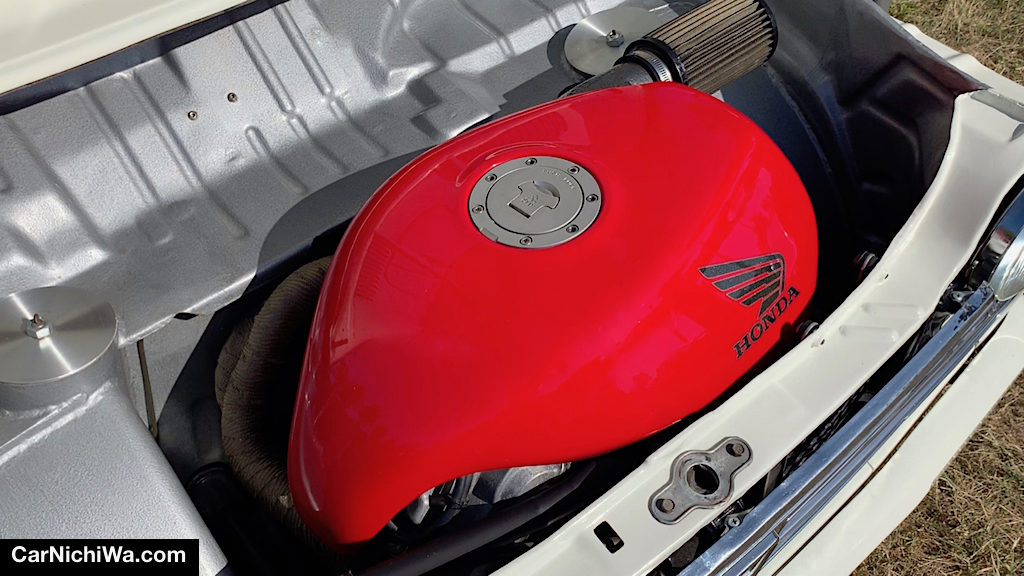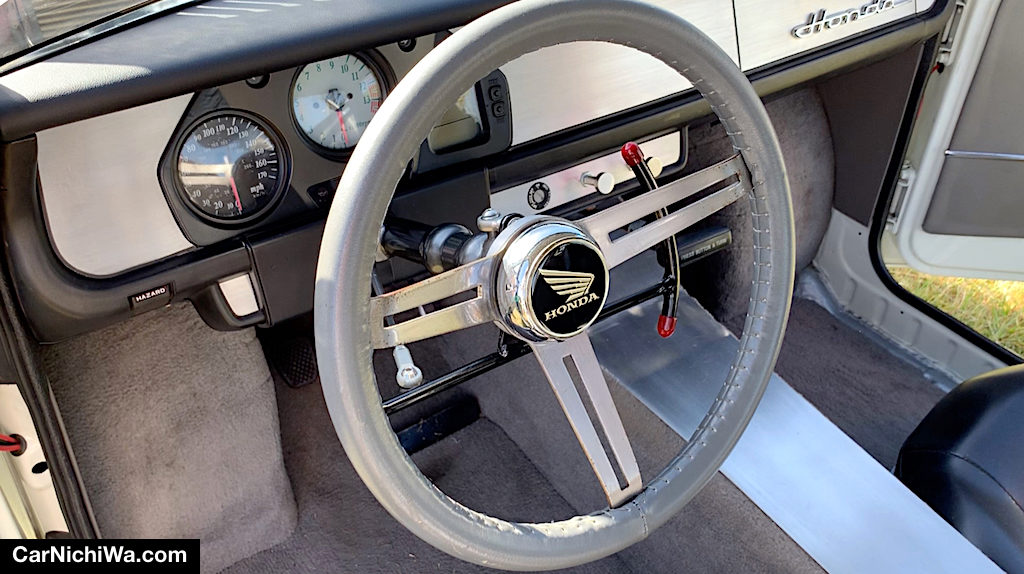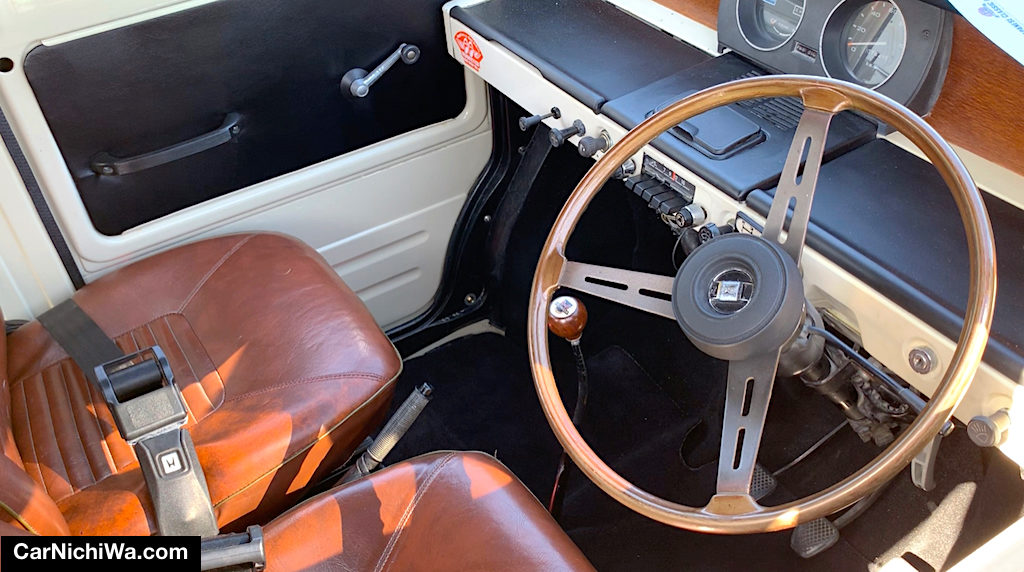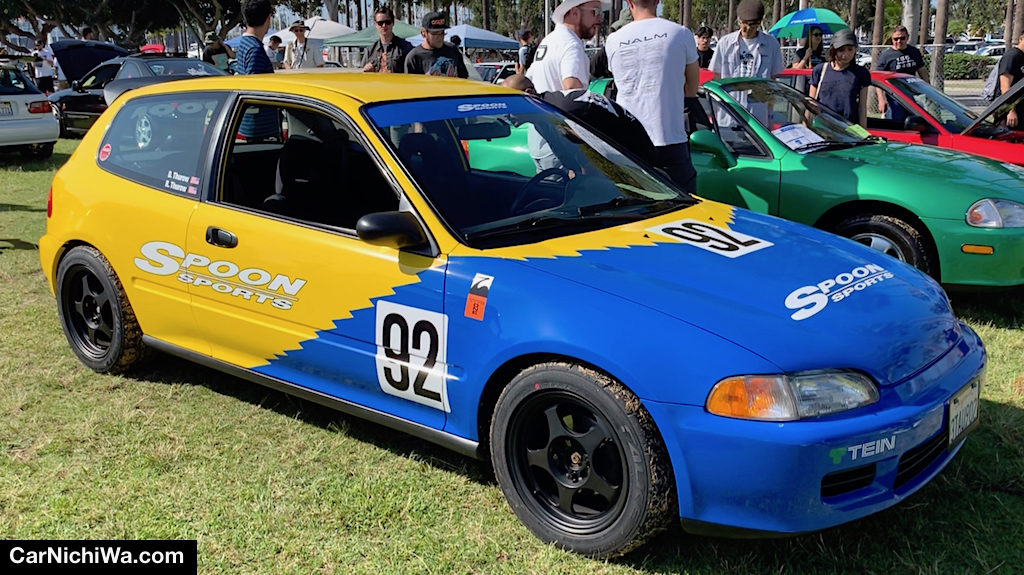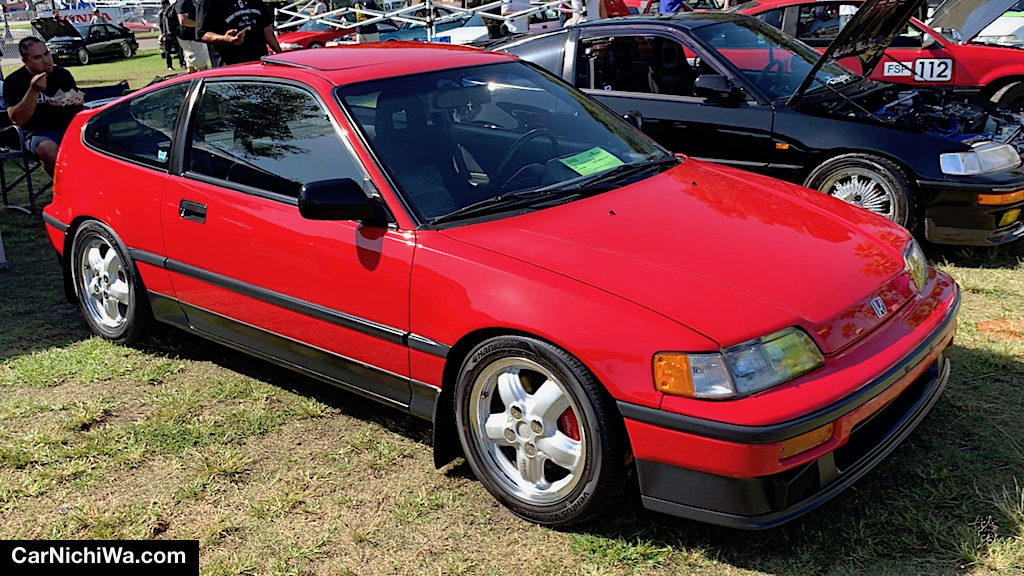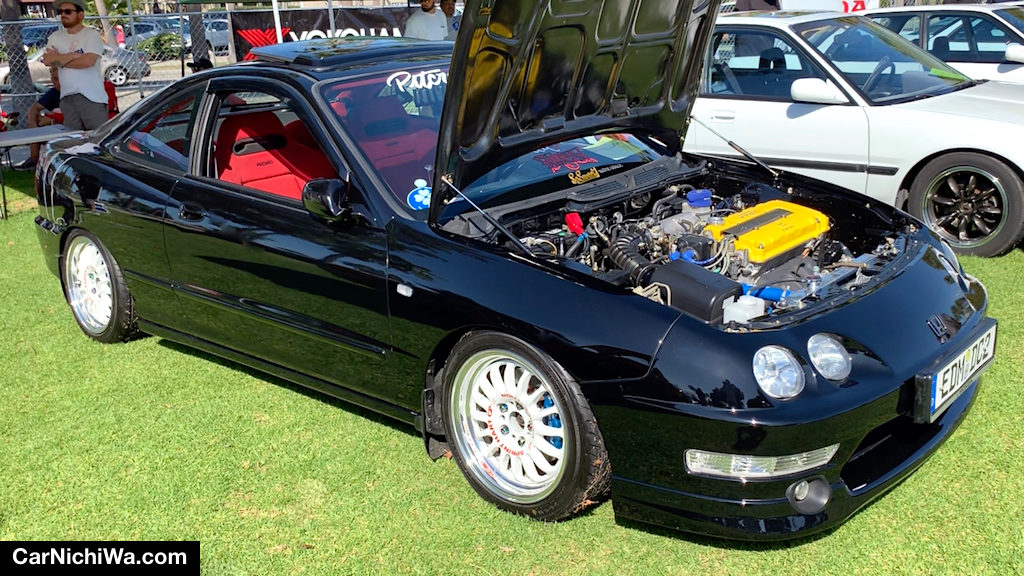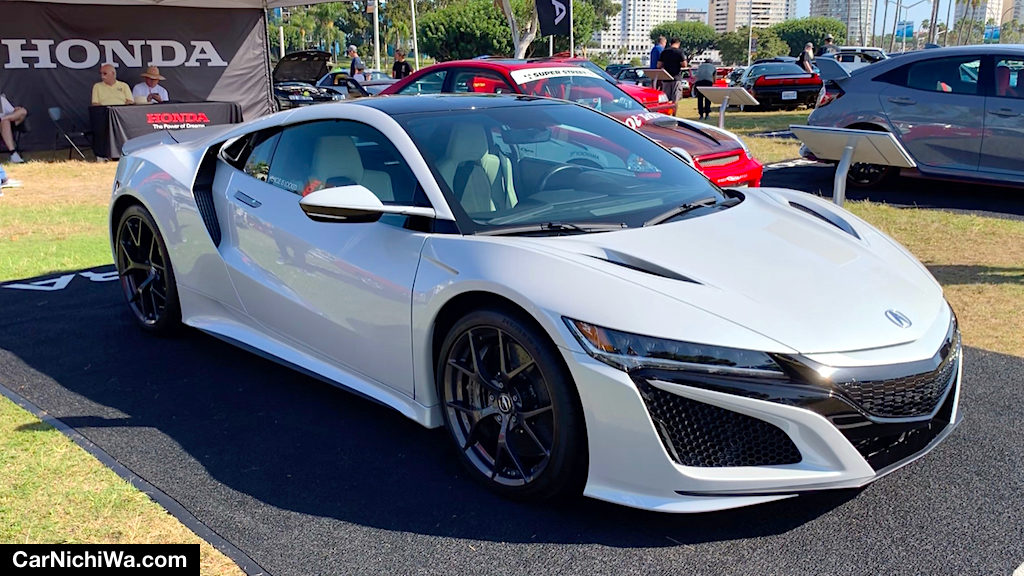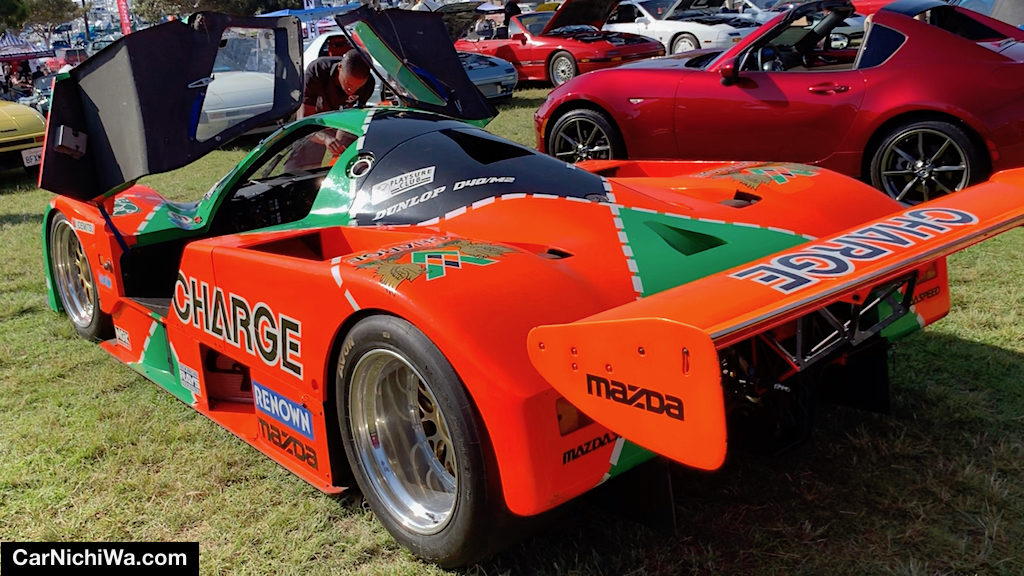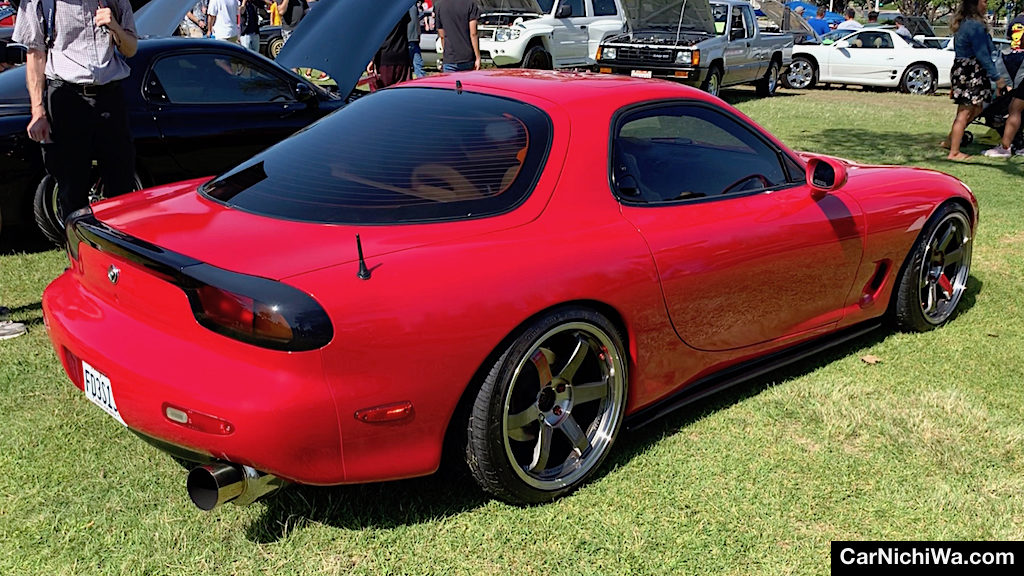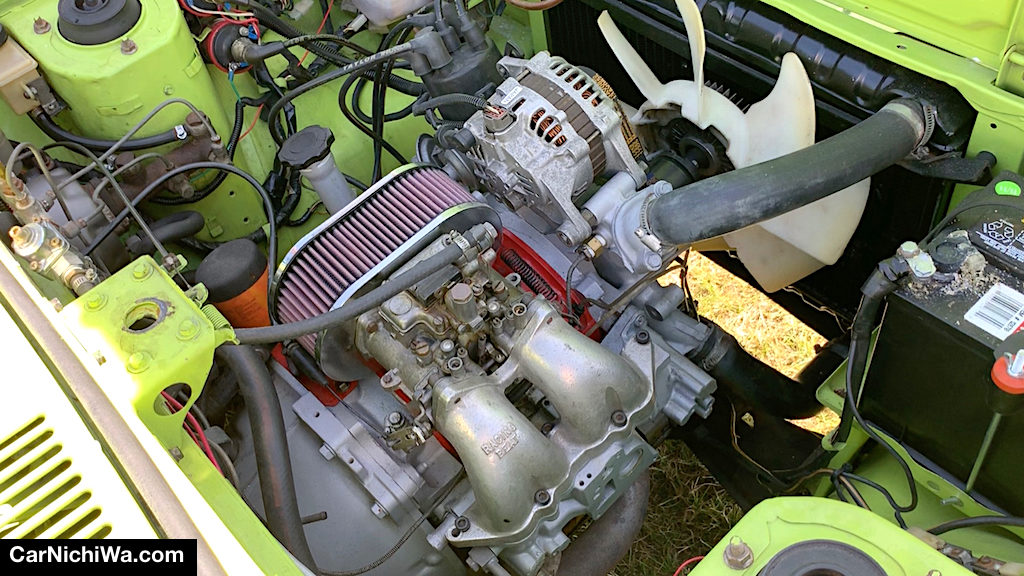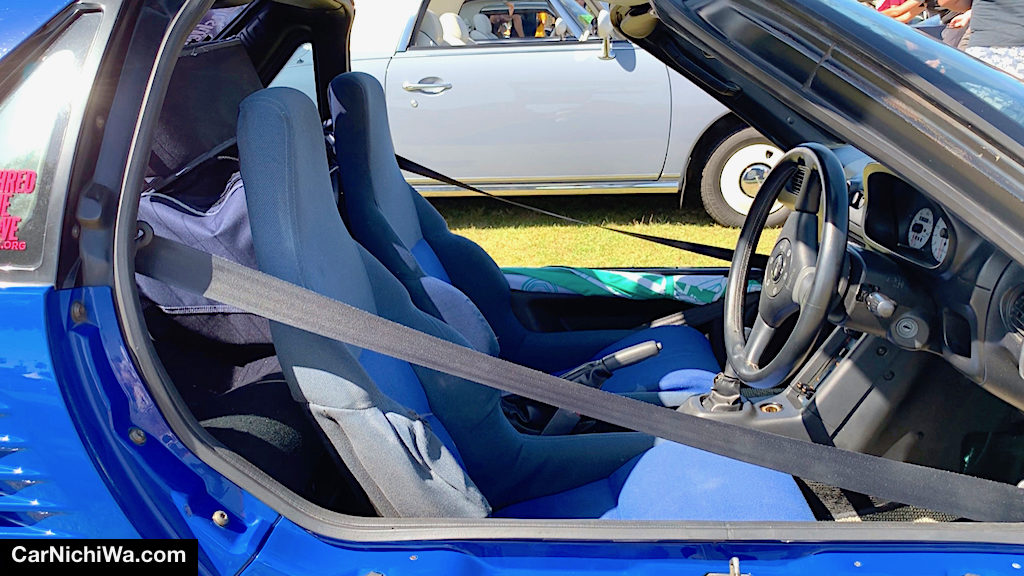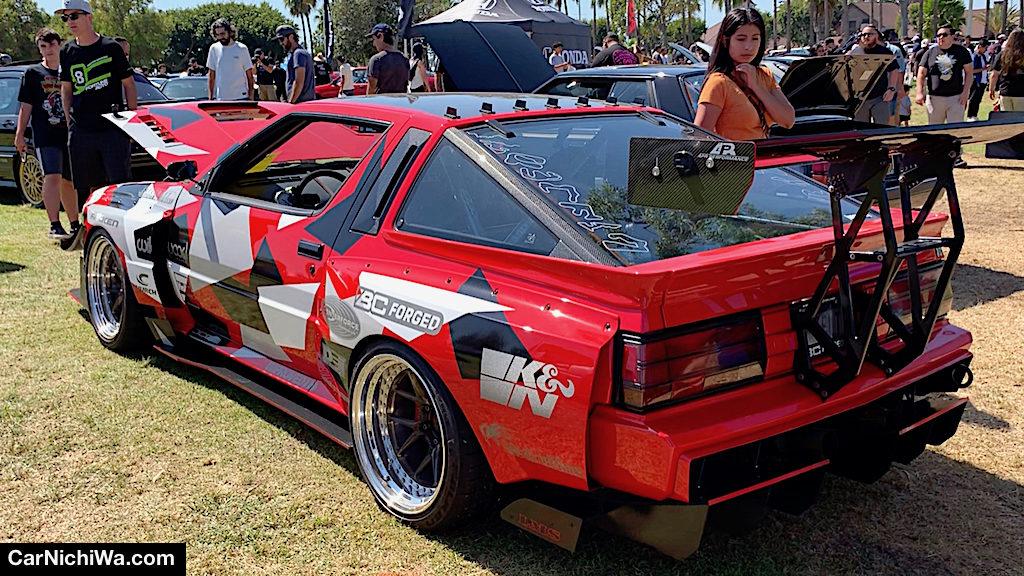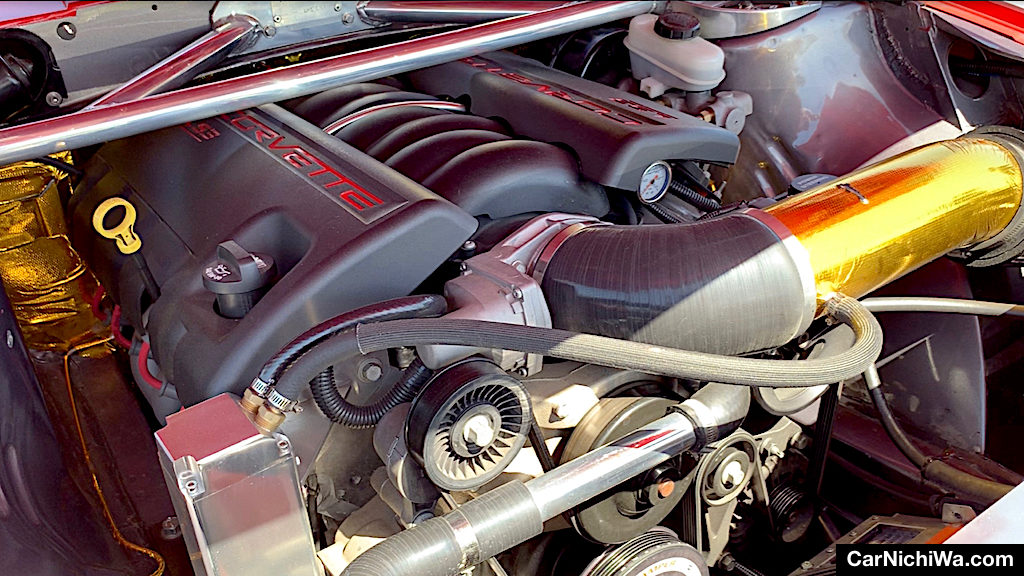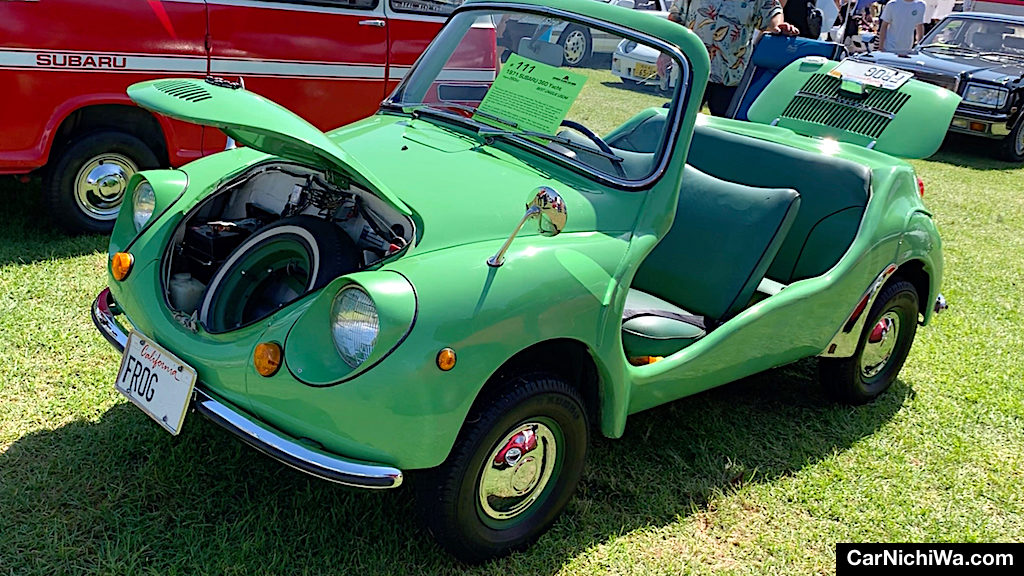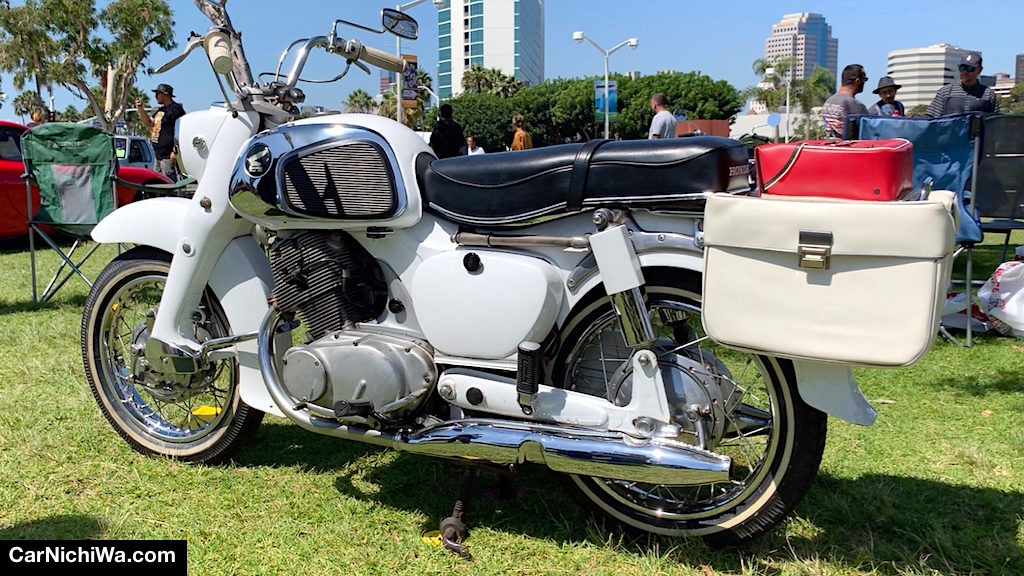By Steve & Tamami Laser
Forty years ago, we had a chance to buy a used Toyota 2000GT for the astronomical asking price (we thought) of $6,000. We couldn’t stretch our budget and settled for a Camaro instead. Today, if one could convince an owner to part with a 2000GT, it might take more than $1 million to drive it home. At the 15th annual Japanese Car Show (JCCS) on Sept. 21, we looked at the rows and rows of cool cars, trucks and vans and wondered which ones could become highly coveted many years from now?
The answer, of course, is to look at the cars that collectors prize today and consult a crystal ball. Will the Acura Integra (above) continue to capture the hearts of enthusiasts decades from now? How about the Nissan Skyline GT-R, Datsun 240Z or Toyota Land Cruiser? And what about today’s new cars, like the 2020 Toyota GR Supra (below), that have the potential to become future collectibles?
This year’s JCCS, held at Marina Green Park in Long Beach Calif., saw hundreds of entries surrounded by thousands of fans and enthusiasts throughout the day. For the sixth year in a row, JCCS kindly provided us with media passes. If you missed the show, or would like to revisit, our story includes 24 short videos that you can watch here, or on our CarNichiwa.com YouTube channel.
Datsun and Nissan
The Datsun 240Z was incredibly popular when it first arrived in the U.S., and the love continues today, nearly 50 years, and many generations later.
It was a thrill to see special guest, Peter Brock, in person at JCCS. At the BRE display, Brock held a meet-and-greet and signed autographs for fans. Back in the 1960s, BRE was one of Nissan’s factory backed racing teams and won several national championships in the Datsun 240Z, Roadster, and 510.
This is BRE’s 1971 240Z Tribute Car, on display at the Brock Racing Enterprises booth at JCCS. It was restored by BRE, along with Pierre’s Z Car Service, Ian’s Auto Interiors, Tucker’s Performance Center, Plastic Media Stripping, and others. Painted ’63 Sebring Sliver and ’14 Mustang White, it wears original-style and updated graphics designed by Peter Brock.
To celebrate the sports car’s 50th anniversary, Nissan has introduced a BRE-inspired 370Z Anniversary Edition package for the 2020 model year. Shown at the automaker’s JCCS display, It features a unique two-tone exterior with graphics that pay homage to the vintage BRE 240Z racers.
Offered on the 370Z Coupe Sport grade, customers can team the 3.7L V6 engine with a 6-speed manual or 7-speed automatic transmission, and White/Red or Silver/Black exterior adorned with bold stripes, red wheel accents, black mirrors and 50th anniversary badges. The interior features special touches including a leather/Alcantara® wrapped steering wheel with red stripe.
Nissan celebrated another major milestone at JCCS by showing the 2020 GT-R 50th Anniversary Edition. Based on the GT-R Premium grade, this model is offered in two-tone color combos: Bayside (Wangan) Blue with white stripes, Pearl White with red stripes, and Super Silver with white stripes.
Along with a special gray interior color scheme, embossed seats, and unique steering wheel and shift knob, owners get to enjoy the GT-R’s 3.8-liter twin-turbo engine rated at 565 horsepower and 467 lb.-ft. of torque. It’s teamed with a 6-speed dual-clutch transmission and ATTESA E-TS all-wheel drive.
This year’s JCCS had a great turnout of vintage Skyline models including this “Hakosuka” or “boxy Skyline.” Our video offers a closer look at several different Skylines displayed by their owners at the show.
While not officially imported into the U.S. market by Nissan, vintage Skylines like this one are now extremely popular with fans and collectors. These right-hand-drive cars, made famous in movies and video games, remain rare sights on the streets.
Equipped with Nismo performance parts and other mods under the hood, this Skyline GT-R, with its mighty RB26 turbo inline 6-cylinder engine, is simply a joy to behold.
With nearly 50 years of production, and a wide range of models to choose from, Nissan and Datsun Z cars remain very popular with collectors. Our video highlights some of the cars that caught our eyes at the show.
We’ve seen just about every way that a Z can be modified, yet we’ve never seen one quite like this 1977 280Z roadster. From the rear it looks a bit like a Ferrari, while the front retains its Z-car style.
And it’s incredibly clean under the hood where we spotted lots of polished chrome and a remarkable attention to detail for the smallest parts and fittings.
Fun to drive and easy to modify, the Datsun 510 is an excellent choice for those entering the Japanese collector car hobby. Our video takes a look at some of the cool 510s at the show, including this good-looking wagon.
As we approached this cool-looking 510, we were checking out its big exhaust and Bluebird-style taillights when spotted a “Rotary” badge on the back. So what’s under the hood?
Yes, it’s powered by a “Zoom-Zoom” Mazda rotary engine. While some might scoff at the notion of mixing brands, we think it fits with the So Cal lifestyle where anything goes. And we can imagine that it goes pretty well on the street.
This police-car style Z looks like it’s ready for action. There really are Fairlady Z police cars in Japan. Nissan recently delivered a trio of new Z patrol cars to the Tokyo Metro Police. In addition to regular duties, they’re used to support traffic safety programs.
Toyota and Lexus
Toyota offered the chance for fans at JCCS to get a close-up look at the all-new 2020 GR Supra. “GR” stands for Gazoo Racing. It’s the first worldwide model developed by the international umbrella for Toyota’s global motorsports program.
The GR Supra’s exterior design was inspired by the FT-1 concept car styled at CALTY studios in So Cal. We love the look of the new GR Supra (and can’t wait to drive it).
GR Supra is powered by a 3.0-liter twin-scroll turbocharged inline 6-cylinder engine teamed with an 8-speed automatic transmission. The car was co-developed with BMW and is built by Magna Steyer in Austria.
This Toyota 2000GT on display from the Malamut Auto Museum is one of the rare left-hand drive models. While the production run of 337 units from 1967-’70 makes it scarce today, even rarer are the 54 models that were imported to North America.
The 2000GT first appeared as a prototype at the 1965 Tokyo Motor Show and was put into limited production in 1967. It features a 6-cylinder DOHC engine delivering 150 horses via a 5-speed manual gearbox to the rear wheels.
While it looks like a miniature 2000GT, the Toyota Sports 800 went on sale in Japan in 1965, before its larger sibling came to the market. The targa-roof sportster is powered by an air-cooled 2-cylinder horizontally opposed engine with dual carbs delivering 45 horsepower.
The Sports 800 was based on Toyota’s Publica economy sedan. Although it wasn’t officially sold in America, the car could be considered to be a forerunner of today’s Toyota 86 by virtue of its front-mounted horizontally opposed engine.
The owner of this stunning 1972 Celica that we’ve seen at previous shows continues to modify it. This time around it was wearing a chopped hood that revealed the highly modified engine (without having to open the hood).
In addition to a right-hand drive conversion, it features a 2JZGTE engine, TH350 transmission with full manual reverse vale body and trans-brake, Toyota truck 8-inch rear end with 4.10 spool, drag-style radial tires, and a 3/4-back half chassis.
This third-generation Celica looks similar to the Celica Supra of the same vintage. However, this particular car might be described as “sleeper” because it looks mostly stock.
Instead of buying a Celica Supra and being satisfied with an inline-6, the owner of this Celica made it a super-special ride by installing a Lexus 1UZ-FE, 32-valve, quad-cam, 4.0-liter V8 engine!
The Corolla is one of the world’s most popular cars with more than 46 million units sold since it was introduced more than 50 years ago. Multi-generations of the Corolla are popular with collectors, including the coupe, AE86 “Hachiroku” hatchback, and wagon.
Toyota has sold more than 10 million Land Cruisers since the iconic model went on sale in the 1950s. Today, vintage Land Cruisers are hot with collectors who enjoy their rugged construction and go-anywhere ability.
When the Land Cruiser J60 wagon came on the market in the 1980s we were seriously considering buying one. Yet we hesitated and went with a van instead. Today these models are highly collectible, delivering creature comforts not found on earlier models.
While this looks a bit like the first Toyota van that was sold in the U.S. in the 1980s, it’s a different breed called Hiace. Toyota still makes the Hiace in a variety of models and sells it in Japan and other markets.
The owner of this 1989 Hiace Super 4×4 Wagon says it has a customized interior with convertible twin beds, LED lighting, an exterior rack system, solar shower and ARB compressor.
We remember when Lexus introduced the beautiful SC 400 coupe in the early 1990s. Now, with Lexus celebrating its 30th anniversary, the first SC turns 27 this year.
If we were in the market for a vintage SC, we’d select one like this, fitted with the 4.0-liter, 32-valve V8 engine. The SC 300 is also a great choice, with its 3.0-liter in-line 6. The SC was called the Toyota Soarer in Japan, since the Lexus brand didn’t launch there until 2005.
Honda and Acura
While American consumers were enjoying happy times with Honda motorcycles in the 1960s, it took a while for Honda cars, like the small N600 and others that followed, to catch on.
N600 (and its predecessor called N360) is well known as Honda’s first commercially successful passenger car. The N600 has a special place among Honda fans as the brand’s first car model line officially sold in America. Our video shows some of the N600 and AZ600 “coupe” models at JCCS.
We’ve never seen anything like this radically modified 1972 600 that Honda displayed at its JCCS this year. Underneath, it rests on narrowed subframes from a Mazda Miata, and features 4-wheel disc brakes and independent suspension.
Honda says the original 600cc, 2-cylinder engine is replaced with a fuel-injected, gear-driven unit from a 1998 Honda Interceptor (VFR 800) motorcycle sending power to the rear wheels. It puts out 115hp and 60 lb.-ft. of torque.
The completely revamped interior is also a joy to behold. The seats are sourced from a Polaris RZR. Gear changes for the transplanted motorcycle’s transmission can be made using steering wheel-mounted paddles.
This 1974 Honda Life Step van is a rare sight in the U.S. In Japan, the first-generation Life was sold as a car, a commercial and passenger van, and a pickup. This one is in great condition and attracted plenty of attention at JCCS.
The interior, with its bus-like steering wheel angle, is nicely restored. Today, Honda’s small, boxy new-generation Kei cars are more popular than ever with the N Series, including the N-BOX, N-WGN and N-VAN, selling more than 2.3 million units.
Like so many Hondas that were popular when new, variants of the Civic are now highly collectible. We saw several cool Civics at the show, from mild to wild, along with the Civic’s sibling, called del Sol.
Popular with grassroots racers, the motorsports theme plays well with multiple generations of the Civic. Whether stock, modded, or rodded, Honda’s evergreen compact continues to have a strong following today.
Honda brought this 1984 CRX Mugen from its private museum collection. This car served as a prototype tester for Mugen performance parts. It features a 1.4-liter 4-cylinder engine with an aluminum block and head, and Mugen camshaft, valves and springs. And it rides on a Mugen-designed suspension.
Small, light, and agile, the CRX was Honda’s affordable two-seater that continued for two generations, from the early 1980s to the 1990s. Like we’ve said about so many cars at JCCS, “We remember when these were new and we saw them everywhere.”
Honda was the first Japanese brand in the U.S. to launch a luxury division. Today, more than 30 years later, many Acura models are popular with collectors. The Integra has staying power, especially the rare Type R.
This modified model sporting Euro number plates was a feast for the eyes, from its super straight exterior, to the red sport bucket seats, and an engine compartment fitted with blue and yellow accents.
Acura brought the latest edition of its NSX sports car to JCCS. With its Sport Hybrid Super Handling All-Wheel Drive™, 573 hp, 9-speed Dual Clutch Transmission, and Integrated Dynamics System, the new NSX is destined to become a future collectible.
Mazda
The highest point of Mazda’s development of the rotary engine came in 1991, when the quad-rotor-powered 787B won the famed 24 Hours of Le Mans.
The 1989 767B Group C Prototype (in our video and below) was at Le Mans earlier, finishing ninth overall, completing 465 laps. It also won two GTP class victories in the All Japan Sports Prototype Championship.
It was an amazing opportunity to get a closeup look at this historic racing car from Mazda’s collection. Upgraded from the previous 757’s triple-rotor 13G engine, the quad-rotor 767 was said to put out a stout 630 horsepower.
While Mazda offered the rotary engine in many of its cars (and a pickup), the RX-7 is likely the most popular choice with collectors today.
Among the third-generation RX-7s at JSSC, this bright red model caught our eye, with its glistening read paint, aftermarket exhaust and wheels, and a super clean interior.
Before the RX-7 sports car joined the brand, Mazda sold the RX-2 and RX-3 rotary-powered cars (and later the larger RX-4). We remember seeing sedan and wagon versions of these models on the road.
Looking under the hood of the bright green RX-3 coupe, it’s fun to see how compact the rotary engine is compared to a traditional inline 4-cylinder piston engine.
The Mazda Autozam AZ-1 is a car that we rarely see in the U.S. Yet we saw two of them at JCCS this year. These small sporty Kei cars with gullwing doors attract considerable attention wherever they go.
Built by Suzuki and sold through Mazda’s previous Autozam dealers in Japan, this mid-engine car is powered by a 3-cylinder turbocharged piston engine. While the gullwing doors made access to the interior easier, it still looks pretty tight for two in the passenger compartment.
Mitsubishi and Subaru
Some rare and collectible vehicles from Mitsubishi and Subaru were on display by their owners at JCCS. The Mitsubishi Montero that was sold in the U.S. was called Pajero or Shogun in other markets.
This is a rare 1997 Pajero Evolution two-door powered by a 3.5-liter V6 engine. Fitted with a large rear spoiler and oversized fender flares, it had a limited run of about 2,500 units. Mitsubishi reportedly wanted to compete in the Dakar Rally, so it build these street versions to qualify.
Remember the Mitsubishi Starion? The sporty coupe is a pretty rare sight today. The owner of this 1988 model kicked up the fun factor with custom body mods, a specially designed interior, a beefed up suspension, performance brakes, and a modified chassis.
We nearly dropped our camera when we looked under the hood and spotted a Corvette engine! The mighty 6.2L LS3 V8 puts out a quoted 515 horses. It’s teamed with a TR6060 trans, and features custom headers and stainless steel exhaust.
Two examples of the rare, and super neat, Subaru 360 were displayed at JCCS. The design and layout of the rear-engine 360 van reminds us of a miniaturized Volkswagen microbus.
This is a 1971 Subaru 360 convertible dubbed the “yacht.” (It looks like something we might have seen in the classic TV show, “Fantasy Island.”) According to the owner, it was converted when new by a shop in Orange County. It’s powered by the same 2-cylinder 360cc engine found in regular production 360s.
Motorcycles
The 9th edition of the Japanese Classic Motorcycle Show, held concurrently with JCCS, included an array of bikes from the Honda, Yamaha, Kawasaki, and Suzuki brands.
This gorgeous 1972 Suzuki T250 was so clean and sparkly that it looked like it just rolled off the showroom floor. It’s tough to believe that this bike is close to celebrating its 50th birthday.
We wrap up our coverage of the show with this vision of a dream. It’s a 1962 Honda CA77 Dream, one of the bikes that we craved when we were kids. We look forward to attending next year’s show.
Visit our reviews of previous Japanese Classic Car Shows:
2018 Japanese Classic Car Show – 500 Cars, Trucks and Bikes Captured Our Hearts
2017 Japanese Classic Car Show – Watch Our Video Review of This Fantastic Show
2016 Japanese Classic Car Show – Our 21 Video Salute to Vintage Cars, Trucks and Bikes
2015 Japanese Classic Car Show – Collectors Yen for “Old School” Datsun, Toyota, Honda, Mazda
2014 Japanese Classic Car Show – Rare Gems Shine in the Shadow of the Queen
CarNichiWa.com thanks JCCS for providing us with media passes
Story, photos and videos © 2019 CarNichiWa.com
